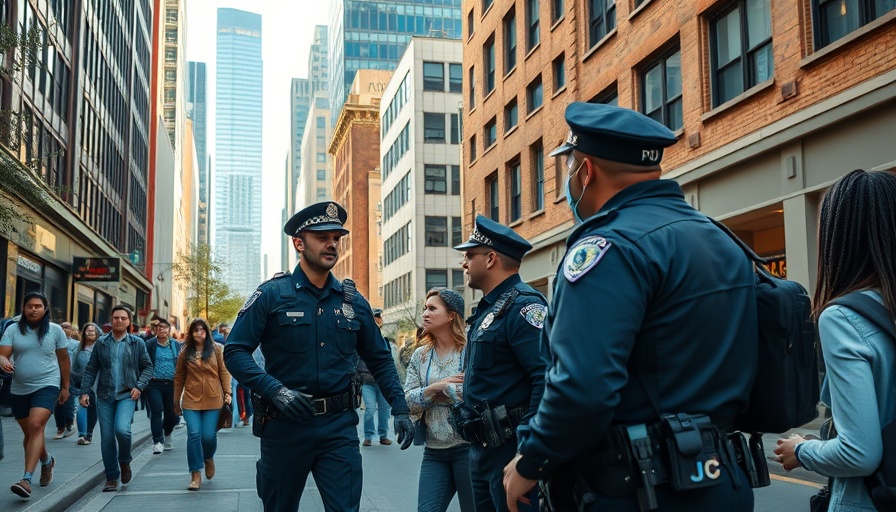
Redefining Crime Reduction through Third-Party Policing
In a novel approach to combat drug-related crime, the partnership between police departments and hotels has emerged as a frontline strategy. The randomized field trial assessing these third-party policing methods brings an innovative edge to public safety initiatives, bridging community engagement and law enforcement.
The Mechanism Behind Third-Party Policing
Third-party policing involves the collaboration between police and external stakeholders, in this case, hotels, to deter criminal activity. As highlighted in a recent study, hotels can play a pivotal role in reducing crime by enforcing policies that encourage reporting suspicious behavior and fostering a safe environment for guests. By integrating law enforcement resources with the operational capabilities of hotels, this strategy aims not only to decrease drug-related incidents but also to enhance the overall community ambiance.
Practical Insights: Why This Matters
This partnership model is significant as it reflects a shift towards community policing—a strategy that emphasizes collaboration between law enforcement and community members to promote safety. The data collected from the field trial indicate a marked reduction in drug crime in areas implementing such partnerships. These results are more than just numbers; they embody the lived experiences of community members who can feel a tangible difference in their environment.
Emotional Impact: Real Changes in the Community
Residents often feel anxious about crime, especially in neighborhoods plagued by drug-related issues. The emotional toll on community members underscored the necessity for effective solutions. As hotels began to collaborate with law enforcement, residents reported an improved sense of safety, illustrating the psychological benefits of visible police presence and collaborative local outreach programs.
Future Predictions: Expanding the Model
The success of this trial suggests potential expansions of the model to other sectors, including retail and entertainment venues, where crime related to drug use could also be prevalent. Policymakers and law enforcement leaders can utilize the findings from this initiative to inspire similar partnerships, thereby broadening the scope of community safety solutions across diverse sectors.
Decisions You Can Make With This Information
The implications of these findings extend beyond immediate crime reduction. For police departments and policymakers, understanding the dynamics of third-party policing can lead to better resource allocation, innovative recruitment strategies, and a deeper commitment to community engagement. By embracing procedural justice and police accountability within these collaborations, law enforcement can cultivate trust and enhance their relationship with the communities they serve.
The Call to Action: Engaging in Innovative Solutions
As public safety issues continue to evolve, it is imperative for police departments and policymakers to adopt innovative strategies like third-party policing. Your engagement in reform, recruitment innovation, and accountability measures will not only enhance community relations but also foster a safer, more trustworthy environment. Consider implementing similar partnerships within your jurisdictions to proactively address the complexities of crime and create shared accountability.
 Add Row
Add Row  Add
Add 

 Add Element
Add Element  Add Row
Add Row 




Write A Comment